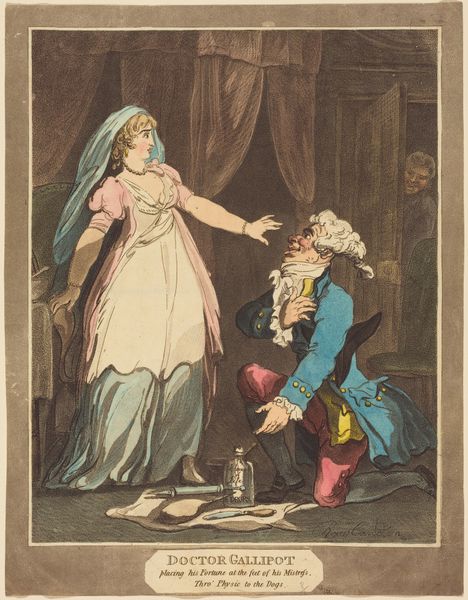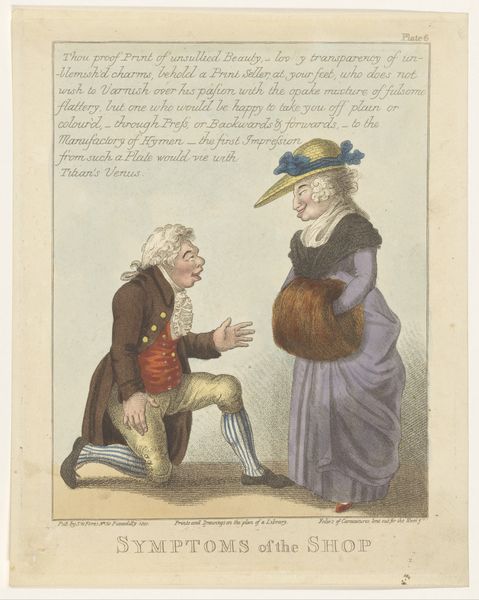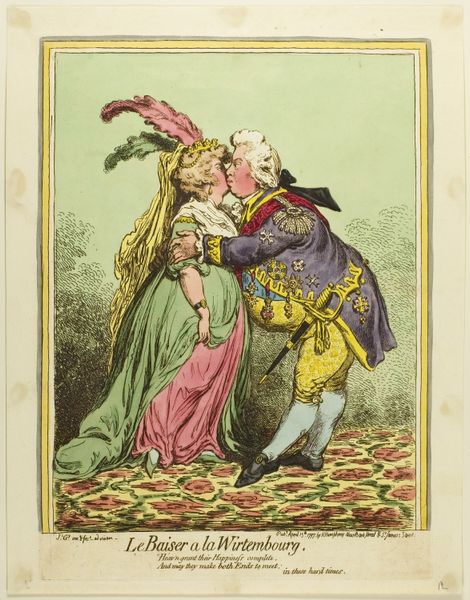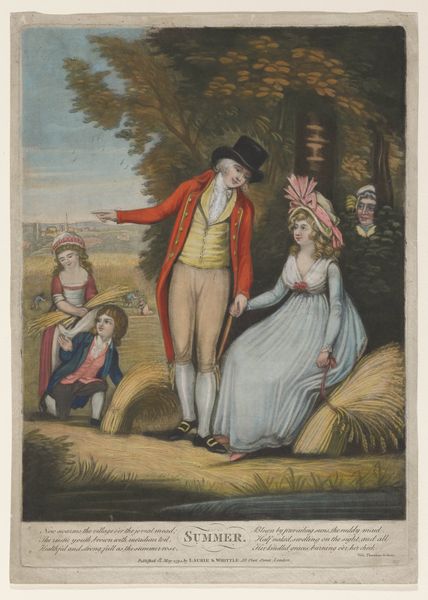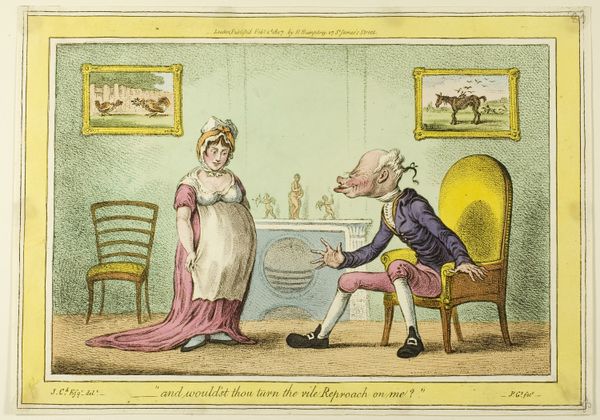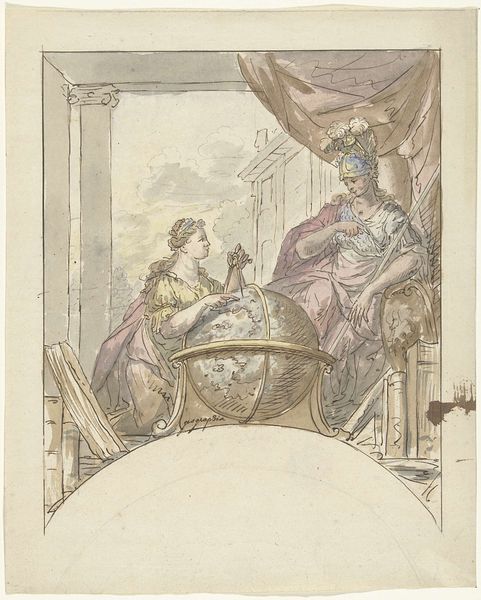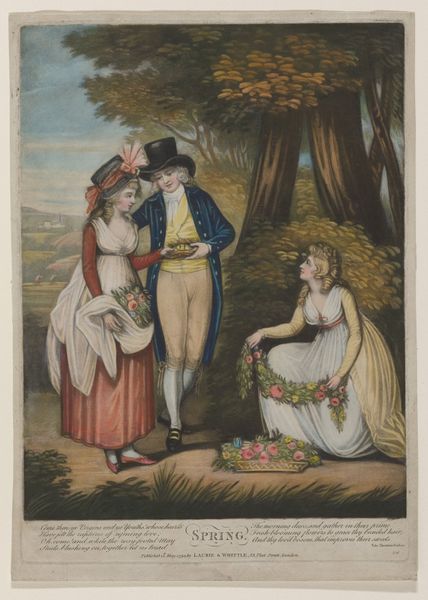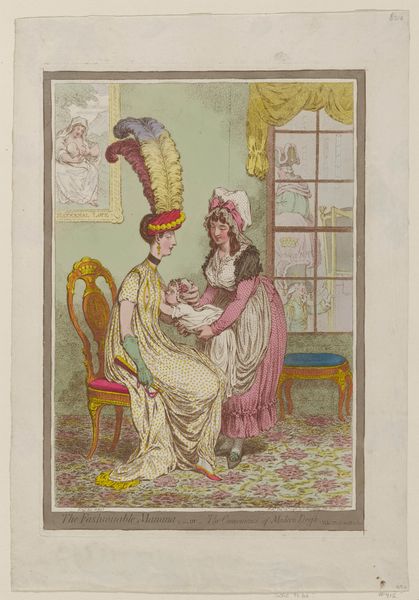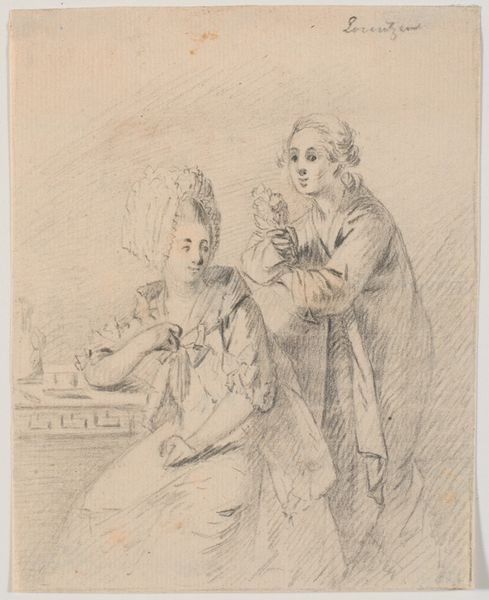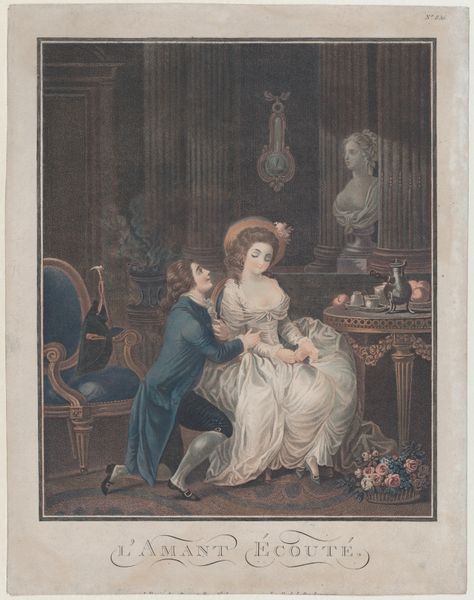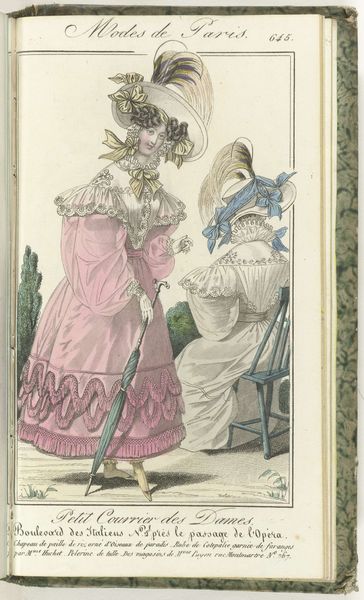
print, etching, engraving
#
portrait
# print
#
etching
#
caricature
#
caricature
#
genre-painting
#
history-painting
#
engraving
Dimensions: height 238 mm, width 175 mm
Copyright: Rijks Museum: Open Domain
Editor: This is "The Duke of Portland and Elizabeth Billington," a print made in 1803 by James Gillray. It seems like an etching and engraving. My first thought is...well, it's definitely a caricature! What story do you think Gillray is trying to tell here? Curator: Gillray was a master of social satire. He ruthlessly skewered the political and social elites of his day. We must understand this image within its historical context, a period marked by intense political rivalries and burgeoning celebrity culture. Editor: So, these aren’t just any people? Curator: Precisely. Gillray targets the Duke of Portland, a Prime Minister known for his political maneuvering, alongside Elizabeth Billington, a celebrated opera singer. Her fame, coupled with rumours of relationships with wealthy patrons, made her a prime target for scrutiny. Notice how the Duke gazes upon her; then look at her puffed dress. It seems like the musical sheet might refer to their relation, possibly insinuating political favour or corruption mediated through artistic patronage. Editor: It looks like social commentary on class and the elite. So, this isn't just poking fun. It's a statement? Curator: Indeed! These caricatures circulated widely, shaping public opinion and holding those in power accountable, and making art more democratic. Consider who consumed these images: print collecting was quite popular across class lines. And further: the power of public imagery during this era reflects anxieties about social mobility and perceived moral decay among the ruling classes. What strikes you about Gillray’s artistic style? Editor: His style makes people grotesque, so is the artist also judging them or inviting judgment? It's an exaggeration that provokes you. I hadn't thought about art operating like that at the time. Curator: Exactly! Gillray's exaggerations acted as a form of visual activism. Examining pieces like these helps us consider the social role of the arts and their function within politics. It provides an interesting view on the function of imagery! Editor: Right! It definitely gave me something to think about, seeing the artwork in that light.
Comments
No comments
Be the first to comment and join the conversation on the ultimate creative platform.

